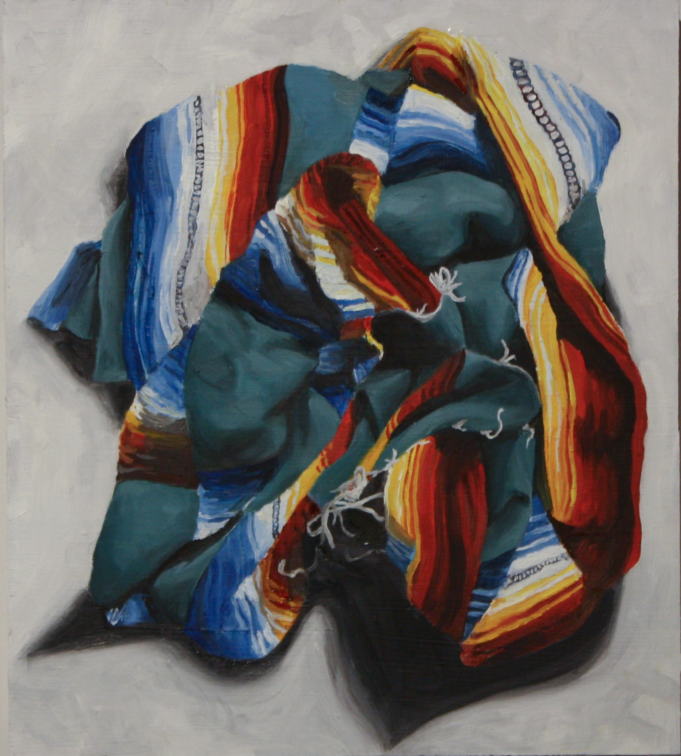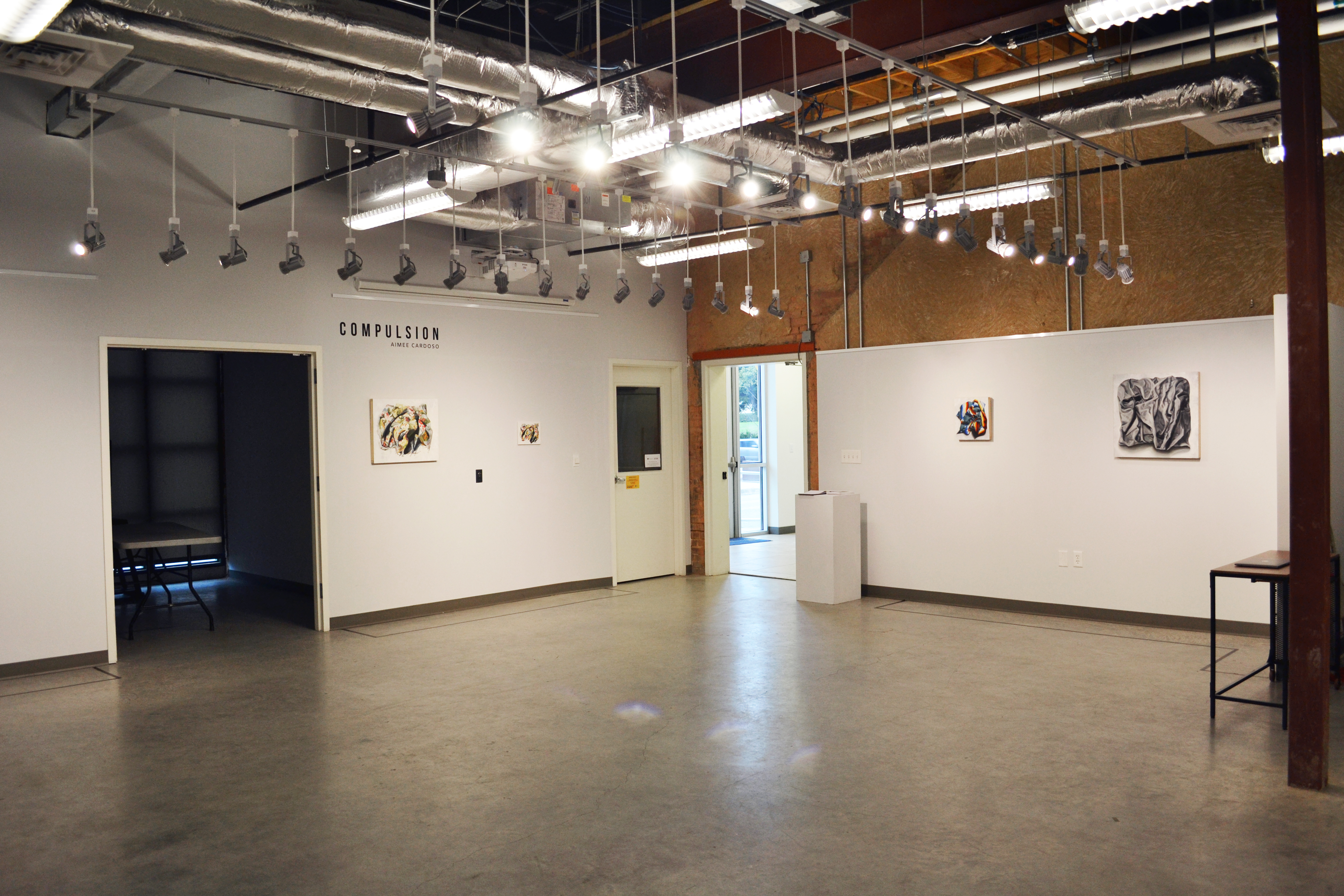For anyone who knows Aimee Cardoso, “compulsive” wouldn’t be the first word that comes to mind when describing her. The largely even-keeled executive director of Art Tooth and Modern Art Museum of Fort Worth staffer outwardly balances dual careers and personal artistic pursuits methodically and with an eye toward long-term planning. But within her paintings, the artist has recently become aware of compulsions that have subconsciously defined her work.
“I’m 50-50 right and left brain” dominant, she said. “I struggle with being creative and knowing when to turn each side [of my brain] off when I’m working.”
The fruits of her inward examination of the creative process will be on display this Thursday as part of her solo show Compulsion at the Bernice Coulter Templeton Art Gallery and Studio at Texas Wesleyan University. Visitors will see largely new works that focus on a medium Cardoso is well known for: fabrics. The artist finds that textiles are forgiving enough for her “OCD-levels” of perfectionism. (Painting human figures would just drive her crazy, she said.) The fine lines and shapes also lend themselves to abstract forms of expression.
In creating the works, Cardoso made a point to observe her conscious and unconscious choices as she rendered carefully pinned cuts of cloth in her studio.
“It was an act of submitting to my instincts and letting go,” she said. “Some works are obviously looser. Those are ones where I told myself, ‘I’m going to do what the fabric is telling me to do.’ That was a learning experience.”
Some works may appear unfinished, representing Cardoso’s newly tested ability to allow a work to be “finished” as a conscious choice and not as the result of predetermined notions of what a finished painting should be. Another work, she said, may appear to have “angry brushstrokes” instead of her typical penchant for evenly blending shadows with lighting.
“Art is always a learning experience,” she said. “With each painting, I’m learning something about myself. The title compulsion describes me fighting my compulsion to be perfect. In some ways, I was finding my compulsions and owning them.”
Painting has helped Cardoso manage what is probably her biggest compulsion: steadfastly working seven days a week, whether it be to support her nonprofit or the Modern’s many projects. Painting, she said, is the only treatment she’s found that calms and centers her busy mind.
Each painting represents intentionality, she said. “I decided to [make artistic decisions] and to own that decision and not let the fabric own me.”
Compulsion has been a reminder that art will always be her ultimate refuge when life gets hectic. The works have also given her renewed ownership over her evolving artistic career.
You can visit the event page here.













